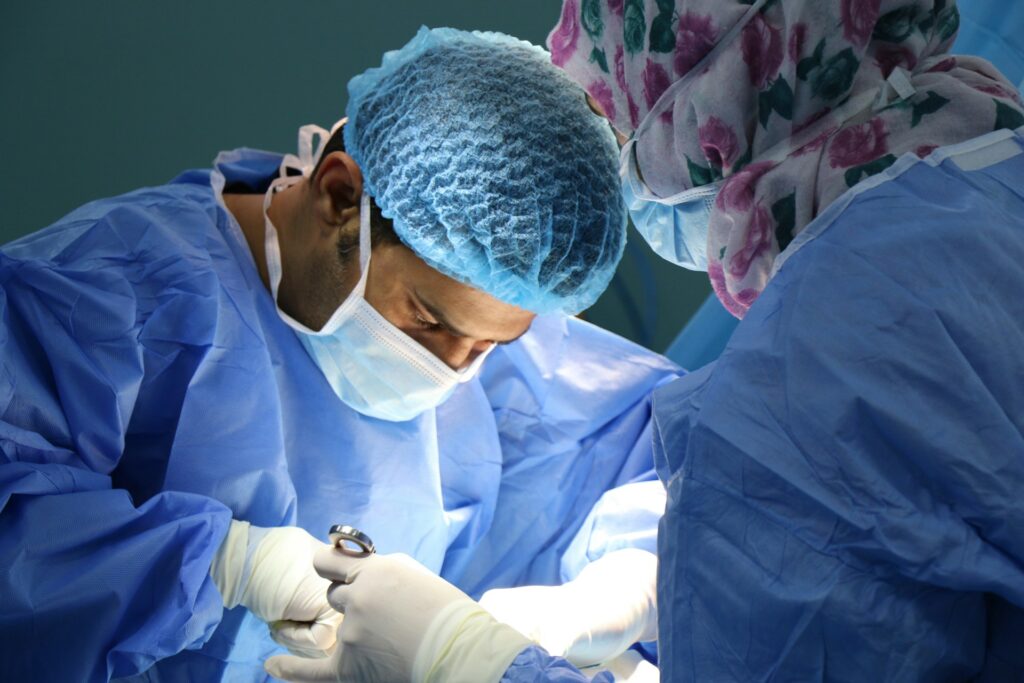
Cleft lip (CL) and cleft palate (CP) are congenital deformities caused by unusual embryonic facial development during intrauterine life [1,2]. This medical condition is not a significant cause of mortality in developed countries; however, it does cause considerable morbidity among children who are affected and their families. The severity of the cleft and the immediate impact followed by the long-range effects may influence the parent’s perceptions, reactions, and needs [3].
Orofacial clefts (OFC) are complex traits seen in 1/1000 live births. Rates vary in different geographical regions and ethnic groups across the world. Birth defects are reported to contribute significantly to infant morbidity and mortality in developed countries where access to medical care is better (WHO, 2005). In Nigeria, the estimated prevalence rate is 0.5/1000; in Ethiopia, 1.4/1000 live births were reported [4]. The calculated prevalence rate/100,000 in India was 33.27 for males and 31.01 for females (1). In the United States, about 1 in every 1,600 babies is born with cleft lip with cleft palate [5].
Like what you’re learning? Download a brochure for our online, postgraduate Oral Pathology and Radiology degree program.
Cultural factors are inherently involved in shaping maternal reactions to childbirth. Maternal birth reactions differ across cultures, particularly concerning children with cleft lip and palate. In developing countries where prenatal care is less advanced, a CL/CP is usually unpredictable, and families have faith in religion and folklore rather than medical explanations to explain the deformity. For instance, individuals in India who practice Hinduism believe that a CL/CP is the result of sins from a past life.
Other religious and cultural beliefs regarding the causation of clefts include witchcraft, God’s will, and engaging in behavior associated with causal power. Responses to physical deformities are influenced significantly by beliefs and attitudes [1,2]
Stigmatization and discrimination are a typical “phenomenon” experienced by families of children with CL/CP impairment in Nigeria. This stigma and discrimination can arise from family members, friends, community members, healthcare workers, and even the affected parents. Cultural assumptions and beliefs about the cause of a CL/CP can profoundly impact the affected individual and their families [6].
The identification of these issues is neglected, and the social stigma of CL/CP is a major obstacle to modern treatment. Early understanding among parents and caretakers regarding the causes and need for multiple surgical interventions for their cleft child and constant follow-up and clinic visits are imperative to ensure compliance with treatment. So, we need to initiate and supervise public intervention programs in this regard, helping parents and children to have a healthier and improved quality of life [1,2]
Etiology/causes
The causes of orofacial clefts among most infants are unknown. Some children have a CL/CP because of changes in their genes or environmental factors such as:
- Smoking during pregnancy increases the likelihood of a baby being born with orofacial cleft compared to non-smoking women.
- Women with pre-existing diabetes are at higher risk of having a child with a cleft lip with or without a cleft palate compared to women without diabetes.
- Some medications used to treat epilepsy or migraine,like topiramate or valproic acid, during the first trimester of pregnancy increase the risk of a baby being born with a cleft LP with or without a cleft palate compared to women not these medications [7].
Diagnosis and treatment
During pregnancy, a routine ultrasound can diagnose orofacial clefts, especially cleft lip with or without cleft palate. They can also be diagnosed after the baby is born, especially cleft palate. However, sometimes, certain types of cleft palate (for example, submucous cleft palate and bifid uvula) might not be diagnosed until later in life.
Surgery to repair a cleft lip usually occurs in the first few months of life and is recommended within the first 12 months of life. Surgery to repair a cleft palate is recommended within the first 18 months of life or earlier. Many children will need additional surgical procedures as they get older. Surgical repair can improve the look and appearance of a child’s face and might also improve breathing, hearing, speech, and language development. Children born with orofacial clefts might need other treatments and services, such as special dental or orthodontic care or speech therapy.
With treatment, most children with orofacial clefts do well and lead healthy lives. However, some may have issues with self-esteem if they are concerned about visible differences from other children [7].
Cultural misconceptions
In many cultures, the explanation for why a specific disability occurs is shared by all community members. Developing countries such as India and Nigeria, their diverse, multicultural societies and different cultures may sometimes reflect considerable variation in beliefs about disability and family life [6].
- Evil spirits
- Ancestors’ punishment related to wrongdoing by family
- Act of God/fate
- Pregnant women going out during an eclipse
- Pregnant women going out on an auspicious day
- Holding sharp objects such as knives, scissors, or needles during pregnancy
- Consanguineous marriage
Prognosis
From a cleft palate standpoint, the prognosis is excellent with surgical repair. Closing the cleft resolves feeding difficulties. Long-term sequelae related to post-operative scarring are managed with surgical scar revisions and revisions palatoplasty, which also have good outcomes [7].
Conclusion
Initiate and supervise public intervention programs aimed at dispelling myths and raising awareness about the etiology and available treatment opportunities for children born with orofacial pathologies such as CLP, helping parents and children to have a healthier and improved quality of life. Public and healthcare professionals must be equipped with the necessary knowledge to combat stigma, discrimination, social and structural inequalities, and misconceptions associated with orofacial cleft.
Postgraduate Oral Pathology and Radiology Degree
Learn more about the clinical and didactic skills necessary to evaluate and manage patients with oral diseases by enrolling in Herman Ostrow School of USC’s online, competency-based certificate or master’s program in Oral Pathology and Radiology.
References
- Turlapati S, Krishna S, Deepak KU, Kanagaraja B, Gayathri KA, Jahagirdar D. A Cross-Sectional Study: Are Myths on Cleft Lip and Palate Still Prevalent? Cureus. 2021 Nov 14;13(11):e19579. doi: 10.7759/cureus.19579. PMID: 34926050; PMCID: PMC8671751.
- Saluja H, Asnani S, Dadhich A, Shah S, Khandelwal P, Sachdeva S. Study of myths and beliefs among the parents of a child with cleft lip and palate. Natl J Maxillofac Surg. 2023 Jan-Apr;14(1):68-71. doi: 10.4103/njms.njms_431_21. Epub 2023 Apr 14. PMID: 37273423; PMCID: PMC10235737.
- The impact of having a baby with cleft lip and palate on parents and on parent-baby relationship Bruno Grollemund,1 Caroline Dissaux,2 Pascale Gavelle,3 Carla Pérez Martínez,4 Jimmy Mullaert,5 Toni Alfaiate,6
- Butali A, Adeyemo WL, Mossey PA, Olasoji HO, Onah II, Adebola A, Efunkoya, Akintububo A, James O, Adeosun OO, Ogunlewe MO, Ladeinde AL, Mofikoya BO, Adeyemi MO, Ekhaguere OA, Emeka C, Awoyale TA, The Nigeriacran Collaboration. Prevalence of orofacial clefts in Nigeria. Cleft Palate Craniofac J. 2014 May;51(3):320-5. doi: 10.1597/12-135. Epub 2013 Apr 4. PMID: 23557093; PMCID: PMC3706513.
- https://www.cdc.gov/ncbddd/birthdefects/cleftlip.html
- Adeyemo WL, James O, Butali A. Cleft lip and palate: Parental experiences of stigma, discrimination, and social/structural inequalities. Ann Maxillofac Surg. 2016 Jul-Dec;6(2):195-203. doi: 10.4103/2231-0746.200336. PMID: 28299257; PMCID: PMC5343627.
- https://www.cdc.gov/ncbddd/index.html

